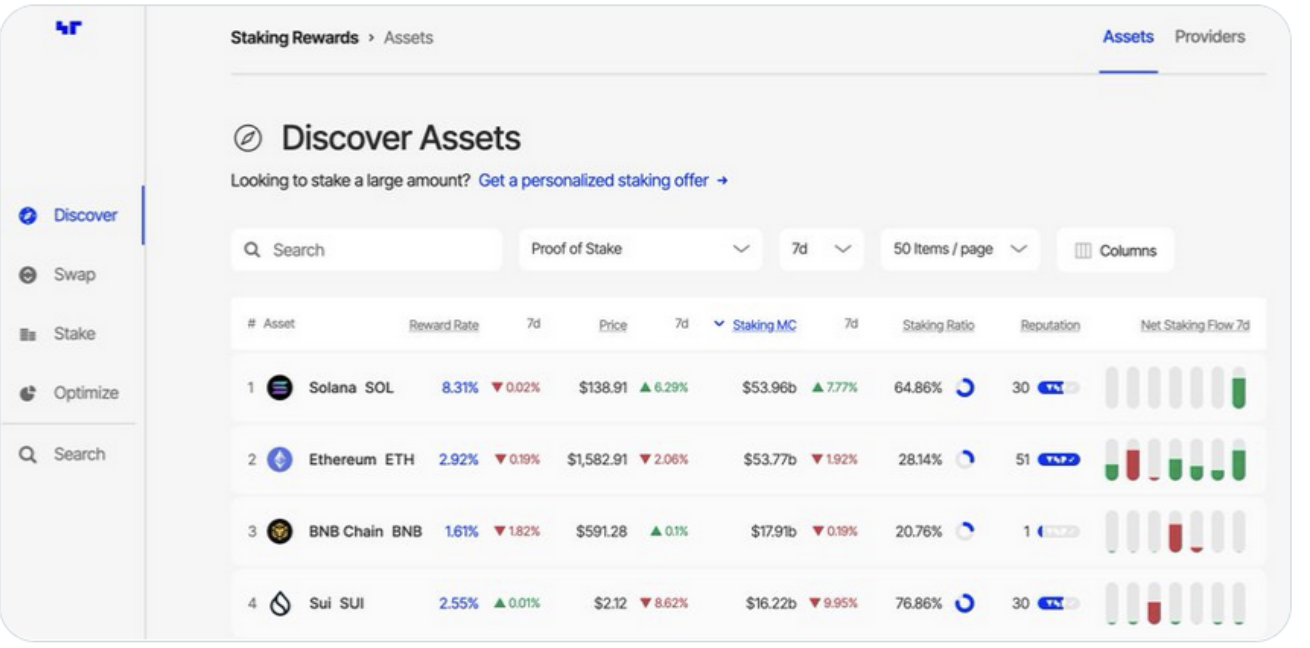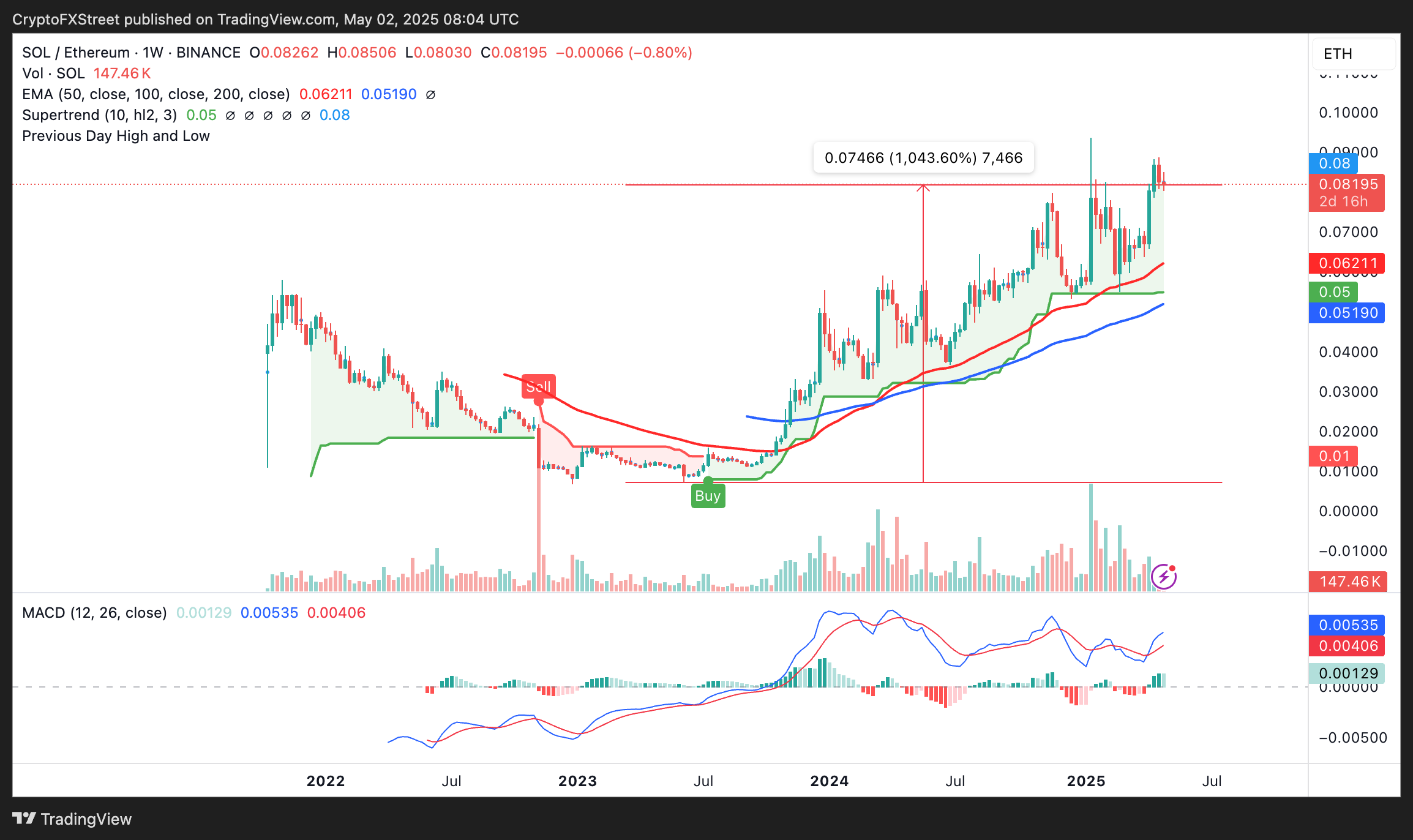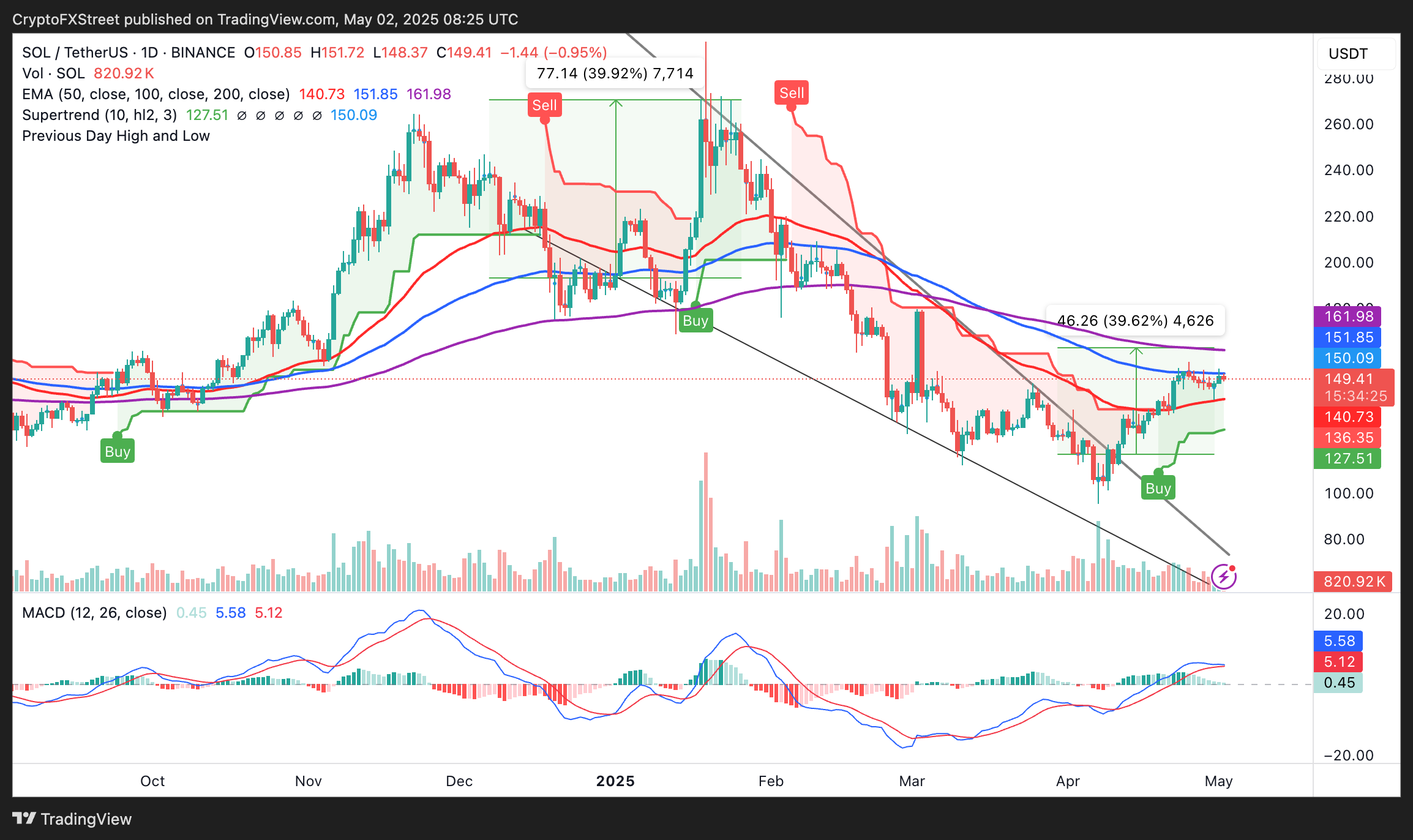Solana Flips Ethereum in Staking Race—Is This the Tipping Point for SOL?
Solana’s staking volume just overtook Ethereum’s—a seismic shift that’s got traders scrambling to adjust their portfolios. The ’ETH killer’ narrative gets fresh ammunition as SOL’s price action starts mirroring its network growth.
Behind the numbers: While Ethereum’s staking dominance wanes, Solana’s low fees and high throughput are pulling in both retail and institutional players. Validators are voting with their SOL—literally.
The cynical take: Wall Street still thinks ’blockchain’ is a spreadsheet upgrade. Meanwhile, SOL stakers are quietly stacking gains while bankers debate PowerPoint slides about ’digital transformation.’
What’s next? If this staking momentum holds, we could see SOL retest its ATH before the next ETF approval cycle. Just don’t tell the SEC.
Solana staking surpasses Ethereum and security implications
The Solana protocol on April 21 surpassed the Ethereum network in total staked value of their respective native tokens, SOL and ETH, reaching approximately $53.96 billion compared to the latter’s $53.77 billion. This has sparked discussions about the impact of staking on both networks.

Staking stats by crypto network | Source: Staking Rewards
In an article published on Wu Blockchain’s Substack, @Ox_Todd said that, considering the basics of Proof of Stake (Pos) mechanisms, "attacking ETH is significantly harder than attacking Solana." This observation assumes that if the success rate of attacking Solana is 0.001%, the difficulty of attacking Ethereum could be 0.0001%.
"The reason is that ETH, as an ancient blockchain, has truly experienced PoS attacks from the early days. It has made extensive preparations to prevent this potential risk, such as encouraging retail investors to participate in staking," the article states.
Nevertheless, the increase in Solana’s staking value to nearly par with that of Ethereum underscores the growing investor interest in SOL. This continues to propel the SOL-ETH ratio, which holds at 0.081, up from its lowest point of 0.0071 in June 2023.

SOL-ETH ratio chart
The increase in Solana staking value risks destabilizing the network’s decentralized finance (DeFi) ecosystem. With staked SOL accounting for 65% of the supply, fewer tokens are dedicated to DeFi activities, such as liquidity provision in automated market makers (AMM) and lending protocols. Holders prefer staking SOL for rewards, which stands at 8.8% compared to the 3% staking rewards on Ethereum.
Solana’s uptrend hinges on reclaiming the 100-day EMA
Solana’s bullish outlook holds between two critical levels: the 50-day Exponential Moving Average (EMA) support at $140 and the 100-day EMA resistance at $150. A break above this resistance would clear the path for more gains that could complete a 40% falling wedge pattern’s breakout target to $161, coinciding with the 200-day EMA.
A buy signal presented by the SuperTrend indicator reveals that bulls could have the upper hand, especially if they break above the 100-day EMA. This signal, encouraging traders to buy SOL, occurs when the indicator flips below the price, changing color from red to green, as illustrated on the chart.

SOL/USDT daily chart
However, with green histograms in the Moving Average Convergence Divergence (MACD) indicator diminishing, Solana’s price could face potential sell-side pressure. Failure to break above $150 in the coming sessions could exhaust bulls, increasing the chances of a pullback. A sell signal would confirm a reversal, with the MACD line (blue) crossing below the signal line (red). Key levels on the downside include the 50-day EMA at $140 and the demand zone at $125.
Cryptocurrency metrics FAQs
What is circulating supply?
The developer or creator of each cryptocurrency decides on the total number of tokens that can be minted or issued. Only a certain number of these assets can be minted by mining, staking or other mechanisms. This is defined by the algorithm of the underlying blockchain technology. On the other hand, circulating supply can also be decreased via actions such as burning tokens, or mistakenly sending assets to addresses of other incompatible blockchains.
What is market capitalization?
Market capitalization is the result of multiplying the circulating supply of a certain asset by the asset’s current market value.
What is trading volume?
Trading volume refers to the total number of tokens for a specific asset that has been transacted or exchanged between buyers and sellers within set trading hours, for example, 24 hours. It is used to gauge market sentiment, this metric combines all volumes on centralized exchanges and decentralized exchanges. Increasing trading volume often denotes the demand for a certain asset as more people are buying and selling the cryptocurrency.
What is the funding rate?
Funding rates are a concept designed to encourage traders to take positions and ensure perpetual contract prices match spot markets. It defines a mechanism by exchanges to ensure that future prices and index prices periodic payments regularly converge. When the funding rate is positive, the price of the perpetual contract is higher than the mark price. This means traders who are bullish and have opened long positions pay traders who are in short positions. On the other hand, a negative funding rate means perpetual prices are below the mark price, and hence traders with short positions pay traders who have opened long positions.

